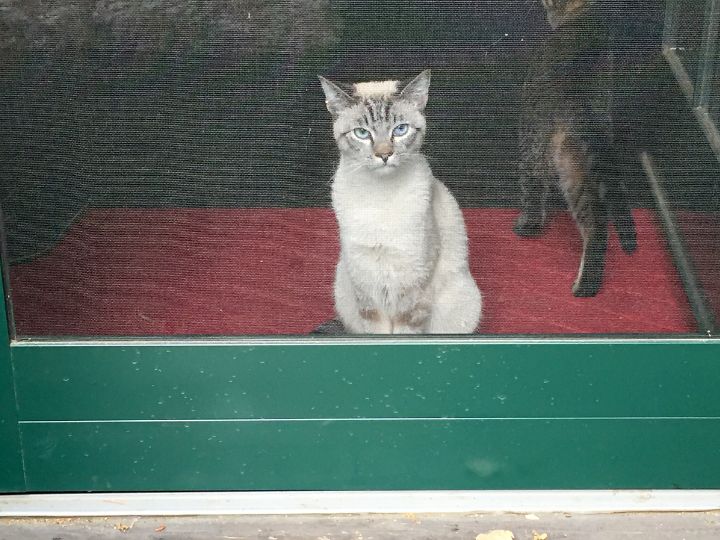Keeping cats out of certain rooms in your house can be a challenge, especially when there is no door to close. Whether you want to keep your cat away from a specific room or you need to keep a room cat-free for allergy or hygiene reasons, there are several effective ways to keep your feline friend out.

One of the most straightforward ways to keep a cat out of a room is to install a door. However, this is not always practical or possible. Fortunately, there are several other methods you can try that do not require major home renovations. From electronic cat repellents to scent deterrents and training techniques, there are many options to choose from depending on your cat’s personality and your household’s preferences.
Remember that every cat is different, and what works for one may not work for another. It may take some trial and error to find the best way to keep your cat out of a room without a door. With patience and persistence, you can find a solution that works for both you and your furry friend.
Assessing the Room
Before you can effectively keep your cat out of a room without a door, it’s important to assess the space and identify any potential entrances. This will help you determine the best course of action for blocking your cat’s access to the room.
Identifying Potential Entrances
The first step in assessing the room is to identify any potential entrances that your cat may use to gain access. These can include:
- Windows: Cats are notorious for jumping in and out of windows, so it’s important to make sure all windows are securely closed and locked.
- Vents: Cats can sometimes squeeze through small openings, so check any vents or other openings in the room to make sure they are properly covered.
- Cracks and gaps: Even small cracks or gaps in the walls or floor can be enough for a determined cat to squeeze through, so make sure to seal up any potential openings.
Blocking Existing Entrances
Once you’ve identified any potential entrances, the next step is to block any existing entrances that your cat may be using to access the room. Here are a few effective methods:
- Install a screen door: If the room has a doorway but no door, consider installing a screen door to keep your cat out while still allowing air to flow through.
- Use a baby gate: A baby gate can be an effective way to block off a doorway or hallway and keep your cat out of a room.
- Create a physical barrier: If there are no existing entrances to the room, you can create a physical barrier using furniture or other objects to block off the space.
- Use a deterrent: There are a variety of deterrents available, from sprays and scents to electronic devices, that can help discourage your cat from entering the room.
By assessing the room and identifying potential entrances, you can take the necessary steps to effectively keep your cat out of a room without a door.

Creating Barriers
When it comes to keeping cats out of a room without a door, there are a few options available. Creating barriers is one of the most effective ways to prevent your furry friend from entering a room they shouldn’t be in. Here are some methods you can use.
Physical Barriers
Physical barriers are an effective way to keep cats out of a room. Here are some examples:
- Free-standing gates: These are easy to set up and can be moved around to different areas of your home. You can make your own using wire shelves and zip ties, or purchase a pre-made gate.
- Baby gates: These are designed to keep babies and toddlers safe, but they can also be used to keep cats out of a room. Make sure to choose a gate that is tall enough to prevent your cat from jumping over it.
- Furniture: Large pieces of furniture, such as bookcases or dressers, can be used to block off a room. Just make sure they are sturdy enough to prevent your cat from knocking them over.
Visual Deterrents
Visual deterrents are another way to keep cats out of a room. Here are some examples:
- Sticky tape: Place double-sided tape or aluminum foil on the floor outside the room. Cats don’t like the feel of these materials on their paws and will avoid walking on them.
- Citrus scents: Cats don’t like the smell of citrus. You can use citrus-scented air fresheners or place orange peels outside the room.
- Motion-activated devices: These devices emit a loud noise or spray of water when they detect motion. They can be effective at keeping cats out of a room, but they can also be expensive.
Remember, it’s important to provide your cat with plenty of toys and scratching posts to keep them entertained and prevent them from becoming bored and destructive. With a little patience and creativity, you can keep your cat out of a room without a door.
Training Your Cat
Training your cat to stay out of a room without a door can be a challenging task. However, with patience and consistency, it is possible to teach your cat to respect your boundaries. There are two types of training methods that you can use to teach your cat to stay out of a room: positive reinforcement and negative reinforcement.
Positive Reinforcement
Positive reinforcement is a training method that involves rewarding your cat for good behavior. When your cat follows your instructions and stays out of the room, reward them with a treat or a toy. This will encourage your cat to repeat the good behavior in the future.
To use positive reinforcement, follow these steps:
- Choose a reward that your cat loves, such as a favorite treat or toy.
- When your cat stays out of the room, give them the reward immediately.
- Repeat this process every time your cat stays out of the room.
Negative Reinforcement
Negative reinforcement is a training method that involves discouraging your cat from bad behavior. When your cat tries to enter the room, you can use a deterrent to discourage them. This will teach your cat that entering the room is not acceptable.
To use negative reinforcement, follow these steps:
- Choose a deterrent that your cat dislikes, such as a loud noise or a citrus scent.
- When your cat tries to enter the room, use the deterrent immediately.
- Repeat this process every time your cat tries to enter the room.
It is important to note that negative reinforcement should be used sparingly and only when necessary. Using negative reinforcement too often can cause your cat to become anxious or fearful.
In conclusion, training your cat to stay out of a room without a door requires patience and consistency. By using positive and negative reinforcement, you can teach your cat to respect your boundaries and stay out of the room.
Frequently Asked Questions
Becky is a fervent wildlife enthusiast and pet care expert with a diploma in canine nutrition. Her love for animals stretches beyond the domestic, embracing the wild tapestry of global fauna. With over a decade of experience in animal welfare, Becky lends her expertise to OutlandishOwl through insightful articles, captivating wildlife information, and invaluable guidance on pet nutrition. Her work embodies a deep commitment to understanding the intricate lives of animals and a passion for educating others on sustaining natural habitats. Becky's hands-on conservation efforts and her knack for translating complex dietary science into practical pet feeding tips make her an indispensable voice for creatures great and small.




